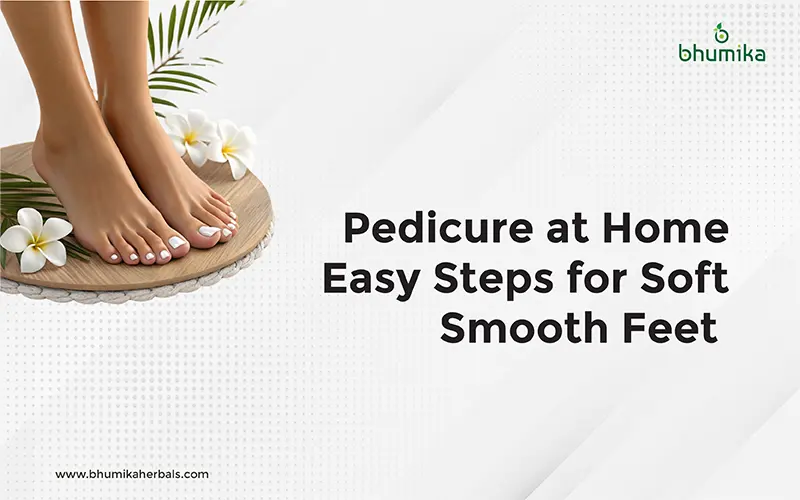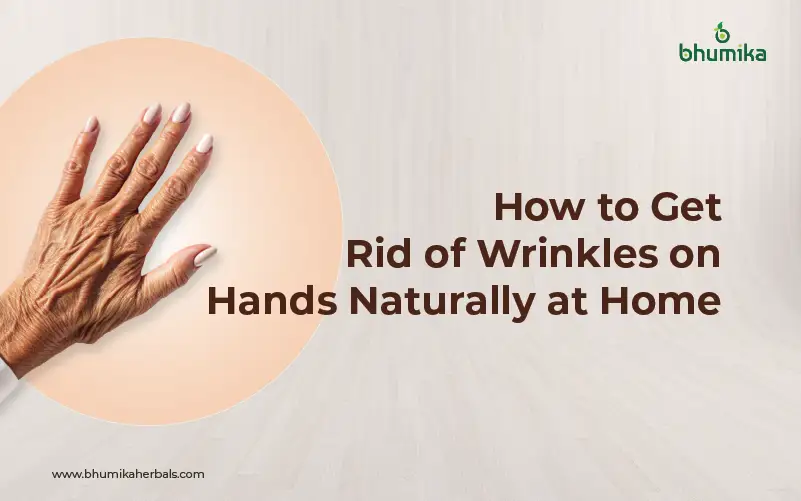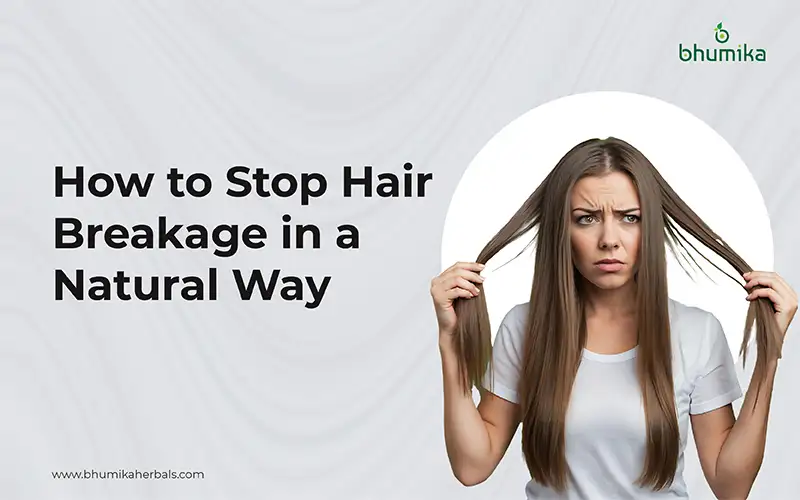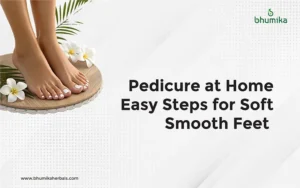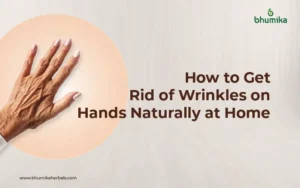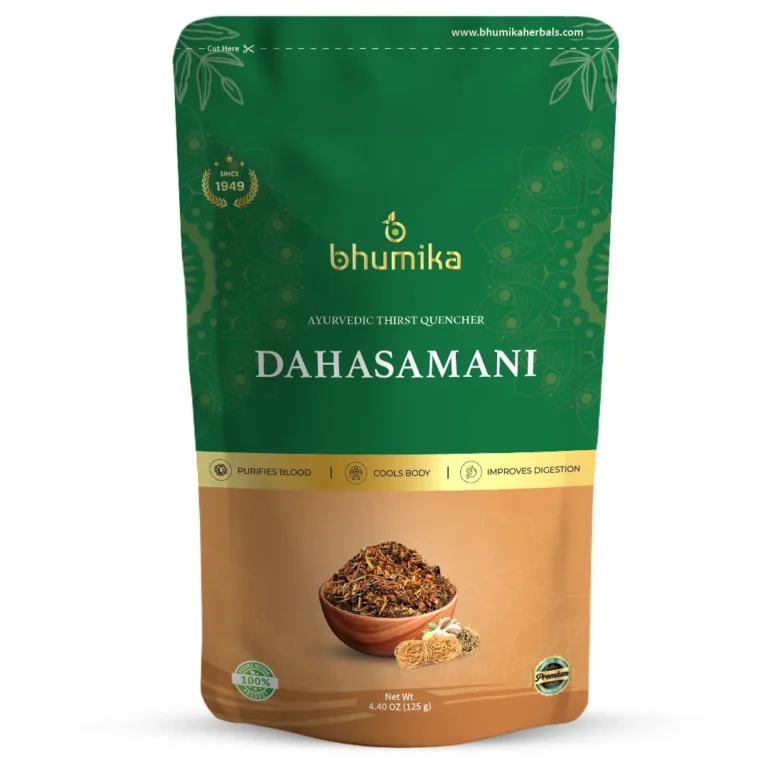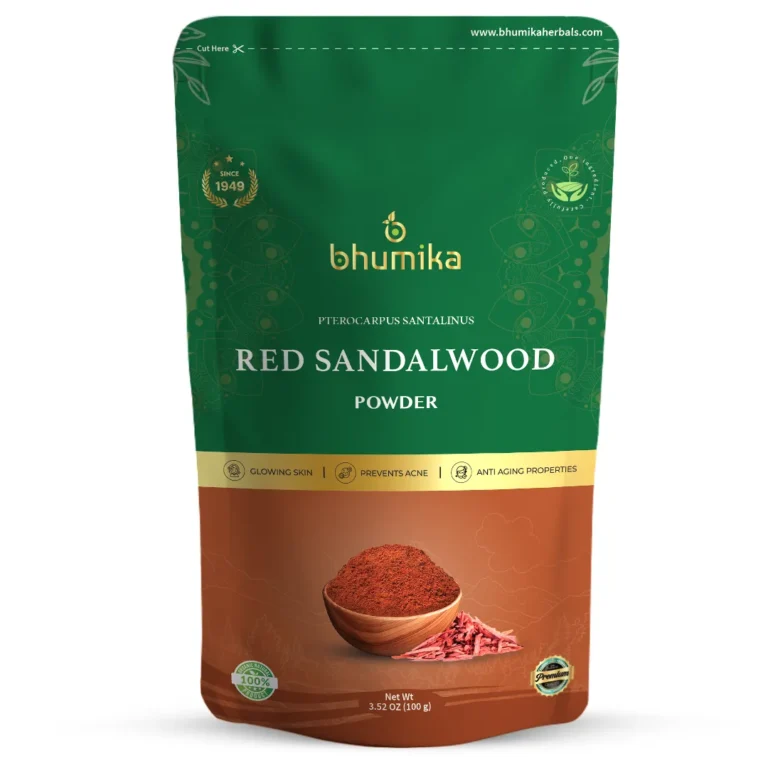How to Repair Damaged Hair Naturally at Home
Share this!
Wondering how to repair damaged hair and bring back its lost shine and strength? Hair damage is a common concern, whether caused by excessive heat styling, harsh chemicals, etc. You can repair damaged hair by avoiding heat styling, handling wet hair, using hair masks, etc. Please read this article further as it provides tips on how to repair damaged hair, helping it get back to its healthy state.
What Exactly Is Hair Damage?
Hair gets damaged when the outer layer of the hair, called the cuticle, is harmed. When the hair cuticle opens up, your hair shaft is more prone to damage.
Damaged hair might feel and appear:
- Frizzy
- Dry
- Tangled
- Brittle
- Unmanageable
- Rough
- Dull
Types of Hair Damage
Here are the common types of hair damage you might experience:
- Dull and Dry Hair: Your hair contains natural oils that coat its outer layer and help maintain its shine. Shampoos containing harsh chemicals can strip away these oils, making the hair more vulnerable. To prevent this, avoid washing your hair frequently and use mild shampoos that suit your hair type.
- Tangles: Damaged hair becomes tangled very easily. When the cuticles are raised, they create friction between strands, leading to tangling. This condition will be worse with dry hair. So, to manage tangles, use a wide-toothed comb, starting from the bottom and working upward. You may also use detangling sprays, oils, conditioners, masks, etc, to help manage tangles.
- Frizz: Your hair becomes frizzy when the cuticle doesn’t lie flat. Frizziness can affect the surface, crown, tips, or ends of the hair, especially if you live in humid conditions. The serum will be effective in controlling frizz and can offer smooth hair.
- Brittleness and Breakage: Split ends happen when a hair strand divides into two, making your hair brittle and prone to breakage. Hair dusting, serums, and conditioners are some of the common ways to help you manage split ends.
What Causes Hair Damage?
Below are some of the main causes of hair damage:
- Heat Styling: The high temperature of the heat styling tools is one of the major contributors to hair damage. Excessive heat from styling tools like straighteners, curlers, or blow dryers can cause your hair cuticle to open and make it porous.
- How to minimize damage: Before using the styling tools on your hair, apply a heat-protectant serum. Maintain a safe distance of about six inches while blow-drying your hair. Also, it is important to dry your hair with a soft cotton T-shirt before styling.
- Bleaching: Bleaching will lighten your hair colour by dissolving the melanin pigment. This process can make your hair dry, brittle, rough, and strip away its elasticity.
- How to minimize damage: Wear sun protection like hats and caps for your hair and moisturize it. Avoid exposure to chlorinated water in pools, as your hair may become dehydrated and result in discolouration.
- Chemical Dyes: Hair dyes are yet another common cause of damage. The pigments in the hair dye may cause your hair strands to lose moisture, which makes them rough and prone to split ends and breakage. Choosing dye shades similar to your natural colour would be better to reduce damage. Also, frequent touch-ups can increase the exposure of your hair to more chemicals.
- How to minimize damage: Do not dye your hair frequently, and use shampoos specifically available for coloured hair. Also, wash your hair less frequently to prevent frequent touch-ups.
- Other Causes of Hair Damage: Some of the other causes of hair damage include harsh hair care routines, aggressive massaging while shampooing, rubbing hair too roughly with a towel, hot showers, dry, low-humidity environments, sun exposure, wind exposure, sleeping with your hair down, etc.
How to Repair Damaged Hair Naturally
Here are some of the simple and effective tips to help you repair your damaged hair:
Set Lower Temperature on Your Styling Tools
There are many styling tools, like curling irons, flat irons, blow dryers, etc, for styling your hair in many ways. However, excessive heat can cause your hair to become damaged, dry and brittle. A common mistake while using these styling tools is setting the temperature too high while styling.
A medium heat will still be sufficient if you have very thick or coarse hair. For those thinking of how to repair damaged hair, one of the ways is to avoid heat styling whenever possible. Remember to use a heat protectant whenever you use heat styling tools on your hair to protect it from thermal damage.
Take Care of Wet Hair
When wet, your hair is so delicate that it is prone to damage, especially if it is fine, curly, or fragile. Do not brush wet hair unless you use a brush designed for wet hair. Also use a wide-tooth comb for detangling your hair. After showering, do not rub your hair harshly with a towel. Instead, dry your hair gently with a soft towel, microfiber cloth, or a t-shirt. Also, avoid using an elastic band to secure your wet hair, as this can lead to breakage.
Trim Hair To Avoid Split Ends
When your hair develops split ends, it starts to unravel from the tips, causing your entire hair to become dull, frizzy, and broken. To avoid split ends, you should keep your hair strong and nourished by using strengthening shampoos, conditioner, and leave-in treatments like anti-breakage shampoo, conditioner and porosity spray.
Trimming your hair at regular intervals can help manage split ends before it gets worse. Don’t worry about losing your hair; you need to trim the ends to maintain your hair’s health, strength, and smoothness.
Protect Your Hair While Swimming and from Sun Damage
Even though swimming is an excellent workout for maintaining your health, it can also be harsh on your hair. Saltwater, chlorine, and the chemicals in pool water can make your hair dry, brittle, and more prone to damage. Moreover, they can strip away your hair colour.
Always wear a swim cap to protect your hair while swimming. Also, if you are heading out in the sun, take extra precautions against the sun by wearing a hat, as its rays can dry out your hair and cause the colour to fade.
Hair Masks to the Rescue
If you are searching for an effective and convenient way to repair damaged hair, a hair mask is an excellent remedy. A hair mask will ensure that your hair stays hydrated, nourished, and moisturised, thereby preventing further damage. Use natural ingredients such as honey, bananas, yogurt, eggs, avocados, etc. To effectively repair damaged hair, use a hair mask once or twice a week.
Use a Hair Serum
The best way to repair damaged hair is by ensuring that it stays well moisturised and hydrated. Use whatever product works best for you, be it a hair serum, oil, or mask. You can apply the serum either before washing your hair or use a leave-in serum after rinsing your hair. In either case, take a small amount of product, rub it between your palms, and evenly distribute it through your hair, focusing on the roots and tips.
Choose a serum that suits your hair type. If you are applying serum to dry hair, make sure it is completely dry before applying. You can use a lightweight serum if you have fine, straight hair, as it won’t weigh down your hair or make it greasy. A hair serum with anti-frizz properties will work well for wavy hair as it tends to frizz easily.
Choosing a lightweight, oil-based serum is great for regular use as a leave-in. For curly hair, pick a serum that helps tame curls, reduce frizz, and detangle, making your hair more manageable.
Maintain a Proper Hair Care Routine
You must follow a consistent hair care routine to achieve the best results. You can begin by washing your hair thoroughly with a gentle shampoo. Make sure to cleanse your hair from the root to the tip to remove any dirt or buildup completely.
Follow up your shampoo hair wash with a hydrating conditioner. You may apply the conditioner only to the lengths of your hair to prevent your scalp from weighing down. The conditioner can seal in moisture, making your hair softer, shinier, and less prone to breakage.
Use Lukewarm Water for Hair Wash
Even though hot showers might seem relaxing to your body, that is not the case with your hair, especially if your hair has already been damaged. Hot water will strip away your hair’s essential oils, leaving it dry and causing the colour to fade faster. So, wash your hair with lukewarm water.
Hair Oils Are Good for Your Hair
Oiling your hair is highly beneficial for its health. Hair oils provide the essential nutrients required by your hair. Moreover, they can repair your damaged hair, protect the roots, cleanse the scalp, and condition your hair from root to tip.
- Coconut Oil: Coconut oil is a widely known natural hair care remedy that can penetrate the hair cuticle and help repair damaged hair.
- Olive Oil: Olive oil works like a natural hair moisturiser, and it can help restore the moisture your hair may have lost and keep it nourished.
- Almond Oil: It can rehydrate dry hair and reduce frizz, thus leaving your hair smoother and more manageable.
- Argan Oil: Argan oil, rich in vitamins E and A, can deeply hydrate your hair, prevent breakage and promote overall hair health.
Do not Shampoo your Hair Excessively
To repair damaged hair, choosing a shampoo that suits your hair and scalp is important. Avoid shampoos containing parabens, sulphates, and other harmful chemicals that could damage your hair further. Also, if you are suffering from specific hair issues such as hair fall, dandruff, premature greying, or split ends, use a shampoo that can address these concerns to help with the repair process.
Clarifying shampoo may be beneficial for those exposed to pollution and the sun, as it helps remove dirt and other impurities. Additionally, avoid using shampoo every day on your hair. It would be ideal to use shampoo three times a week for oily hair and twice a week for dry hair. Select the shampoo that best meets your hair type and needs, and avoid frequent washes to repair damaged hair.
Seek Professional Help for Severe Hair Damage
While the tips mentioned above can help repair your damaged hair gradually, there can be cases where the damage may be more severe and require professional help. Sometimes, your hair issues are genetic, caused by hormonal imbalances such as thyroid problems or postpartum changes, or if the damage may be too severe to be repaired with at-home remedies, then it is important to consult your doctor. They can help you with targeted treatments, supplements, or products to help repair severely damaged hair.
Natural Hair Masks for Damaged Hair
These are some natural hair masks that can be tried at home to repair damaged hair.
Henna Hair Mask
Henna powder, also known as Mehendi, is a powerful ingredient that can nourish and strengthen your hair. It also helps in preventing breakage and leaves your hair shiny and soft. Try this mask once a week for the best results.
Ingredients:
- Henna powder
- Banana
- Egg
- Fenugreek powder
- Water
Directions:
- Mix all the ingredients to create a paste.
- Apply the paste to your hair, covering it from root to tip.
- After 30 minutes, rinse with a mild shampoo.
Avocado Hair Mask
Avocado, packed with vitamins, minerals, and essential fatty acids, can help restore moisture and shine to dry hair. Repeat this remedy weekly for damaged hair. You may also use this hair mask monthly for obtaining healthy hair.
Ingredients:
- Ripe Avocado – 1
- Egg – 1
Directions:
- Mash the avocado and mix it with egg to form a paste.
- Apply this paste to damp hair.
- After 20 minutes, rinse with cold water.
Egg, Strawberries and Olive Oil Hair Mask
Strawberries, rich in antioxidants, when combined with egg yolk and olive oil, will provide moisture, strength, and shine to your hair.
Ingredients:
- Strawberries – 1 cup
- Egg yolk – 1
- Olive oil – 3 tablespoons
Directions:
- Blend all the ingredients to prepare the mask.
- Apply the mixture to your hair and cover it with a shower cap.
- After 30 minutes, rinse with cold water and follow up with your regular conditioner.
Apple Cider Vinegar Hair Mask
This mask effectively cleanses your hair. In this mask, apple cider vinegar and lemon act as astringents, while yoghurt provides moisture to hair.
Ingredients:
- Plain yoghurt – ½ cup
- Apple cider vinegar – 1 teaspoon
- Lemon juice – 1 tablespoon
- Water – 2 tablespoons
Directions:
- Mix all the ingredients, and you may also add honey if you have dry hair.
- Massage the mixture into your scalp, leave it for 1 minute, then rinse.
Egg, Whole Milk and Coconut Oil
This nourishing hair mask will leave your hair smooth and shiny.
Ingredients:
- Egg – 1
- Whole milk – ¼ cup
- Melted coconut oil- 2 tablespoons
Directions:
- Whip the egg and combine it with the remaining ingredients.
- Apply the mixture to your hair with a brush, covering your entire hair.
- Cover your hair with a shower cap and warm it with a blow dryer for about 20 minutes.
- Rinse your hair with cold water.
Also Read: Benefits of egg for hair
Banana, Olive Oil and Honey
This banana hair mask that uses olive oil and honey along with banana can hydrate dry and brittle hair. Olive oil works like a natural conditioner for your hair, whereas bananas rich in potassium effectively repair damaged hair. Moreover, vitamin A in bananas helps strengthen hair follicles.
Ingredients:
- Overripe banana- 1
- Olive oil – 1 ½ tablespoons
- Honey – 1 tablespoon
Directions:
- Blend all the ingredients into a paste.
- Apply this paste to your entire hair, from roots to tips.
- After 15 minutes, wash your hair thoroughly.
The Bottom Line
Hair damage can result from various factors such as heat styling, bleaching, colouring, hot showers, poor hair care routines, and more. If you are wondering how to repair damaged hair, some of the easiest methods include following gentle hair care practices, applying serums, oils, and using homemade hair masks.
Frequently Asked Questions on How to Repair Damaged Hair
What causes hair damage?
Hair damage can be caused by heat styling, chemical treatments like bleaching or dyeing, harsh hair care routines, hot water, sun exposure, and even environmental factors such as humidity and pollution.
How can I repair damaged hair naturally?
You can repair damaged hair naturally by using hair masks made from ingredients like honey, yogurt, avocado, banana, henna, and egg. Regular oiling with coconut, almond, or argan oil also helps restore hair health.
How often should I trim damaged hair?
You should trim damaged hair every 6 to 8 weeks to remove split ends and prevent further breakage.
Which oils are best for repairing damaged hair?
Coconut oil, almond oil, olive oil, and argan oil are best for repairing damaged hair. These oils hydrate, strengthen, and protect hair from further damage.
Can damaged hair become healthy again?
Yes, damaged hair can become healthy again with consistent care. Using nourishing products, avoiding heat and chemicals, regular trimming, and applying masks and oils can help restore hair health over time.
About the Author
Vishnu Raj
Related Posts
Patrangasava is an Ayurvedic medicine that is very familiar among...Read More
Our feet often receive very little care and attention. Constant...Read More
Did you ever think about the impact of your food...Read More
As the years pass, our bodies undergo natural changes, and...Read More
We all have experienced an itchy scalp at least once,...Read More
Chandanasava is an Ayurvedic medicine that offers significant benefits for...Read More
With every passing day, your skin is struggling to cope...Read More
Hair breakage is a frustrating hair concern experienced by many...Read More
Share this!
Share this!
Shop by Concern
Acne & Pimples (8) Dandruff & Scalp Itchiness (6) Dark Circles & Puffy Eyes (4) Dead Skin Cells (5) Dehydrated Skin (4) Dry & Damaged Hair (5) Dryness (4) Dry Scalp (6) Dry Skin (3) Dull Skin (7) Excessive Oilness (4) Face Care (8) Fine Lines & Wrinkles (7) Greying (3) Hair Care (8) Hairfall (6) Hair Loss & Growth (6) Hyper Pigmentation (5) Post Partum Hairloss (2) Skin Brightening (8) Skin Care (7) Stretch Marks (3) Tanned Skin (5) Uneven Skin Tone/ Pigmentation (5) Uneven Skintone/ Texture (5)





